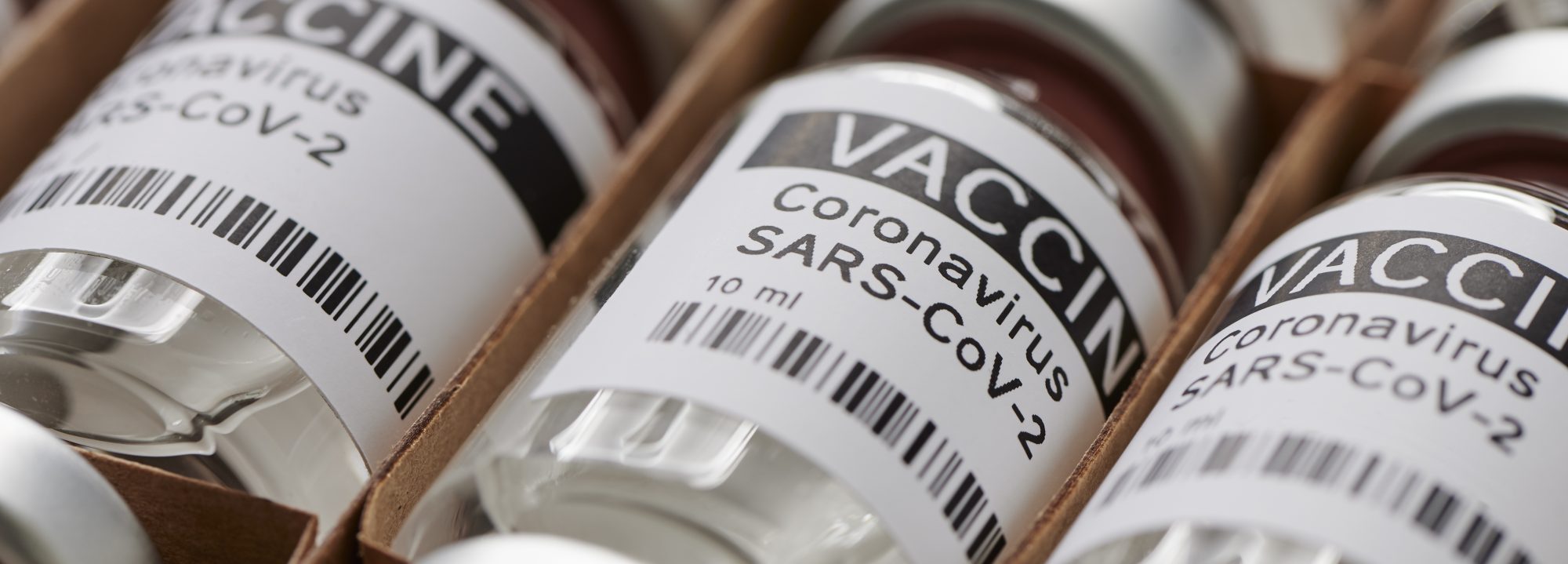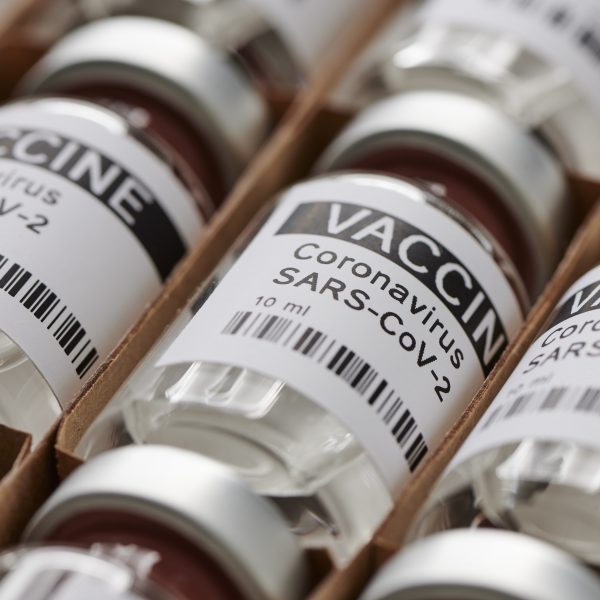The global Covid pandemic has been one of the worst disasters we have collectively faced for generations, resulting in hundreds of thousands of deaths, disabilities, and losses of livelihoods. Alf Goebel at advanco examines how successful the pharmaceutical serialisation and track-and-trace sector has been in overcoming the multiple logistical challenges posed by the global Covid vaccination roll-out.
The global COVID pandemic has been one of the worst disasters we have collectively faced for generations, resulting in hundreds of thousands of deaths, disabilities, and losses of livelihoods.
However, in an exercise which underlines just how effective the pharmaceutical sector can be when it needs to perform under pressure, several manufacturers managed to successfully develop vaccines in less than 12 months – an extraordinary achievement, given it has historically taken around a decade, or longer, to develop new vaccines. With regulators also acting with urgency to provide full sign-off for them to be used on the public, the pressure is now on to manufacture more doses of COVID-19 vaccines than any other vaccine in history to inoculate enough people to achieve global vaccine immunity, with the ultimate aim of putting an end to COVID once and for all. Together with this mammoth, global, manufacturing pressure goes the need to provide cast-iron serialisation, or track-and- trace, services for this medicine.
The need for complete reliance that the vaccine is the real deal is essential. We have already seen instances of forged vaccines. Only at the start of February this year were 3000 fake vials of COVID vaccine seized in China, an operation resulting in the arrest of 80 people. With depressing predictability, I am confident this is just the tip of the iceberg, with further fake vaccines being produced across the world at this very moment in time.
The pharmaceutical serialisation sector has therefore had to step up more than ever before. Not only does the global vaccine roll-out need track-and-trace technology, delivered accurately and swiftly, this huge task has had to be done in addition to the sector’s “day-job” of serialising the routine, everyday medicines and medical equipment needed across the world to battle the globe’s collective ailments and diseases.
How successful has this mammoth COVID vaccination serialisation operation been so far? And what, if anything, needs improving to ensure the programme remains a success in the weeks and months ahead?
Addressing the Challenges of COVID Serialisation
Before we assess how successful, or otherwise, global vaccine serialisation efforts have been so far, we firstly need to set the scene.
To ensure the vaccinations – some of which need to be prepared, stored, and shipped in temperatures as low as minus 80 degrees Celsius – can be handled in the specific manner called for, the pharmaceutical sector has had to quickly learn, adapt, and implement some major changes to its processes. It is likely these changes will need to continue to evolve to cope with the expected long-term fallout of the pandemic, with no guaranteed end-date in sight, new strains being discovered with alarming regularity and the lifespan of the vaccines still not known for sure – meaning the jabs may have to be given repeatedly across the world.
One of the major issues that the pandemic has highlighted is the practical difficulties of implementing serialisation processes being faced by manufacturers who rely on their own in-house systems.
Prior to the pandemic, such producers were well-versed in producing their own drugs and medication. While some of these products might have called for specific conditions, the chances are that nothing too extreme was required. However, when it comes to some of the COVID vaccine types, the entire cold chain process, covering everything from production and packaging, requires the product to be produced, stored, and distributed at anywhere between minus 20 and minus 80 degrees Celsius.
Some of the manufacturers quickly realised that these conditions came with a whole set of new problems they had not dealt with before, especially relating to serialisation. The technology needed to cope with these extreme temperatures just did not exist – whether this was implementing the serialisation codes or being able to physically scan and read them. These were major issues which needed to be solved with speed.
Bear in mind this was all being figured out while the eyes of the world were watching, with manufacturers facing intense pressure to produce the vaccine and ship it out to all four corners of the world a lot more quickly. Additionally, the volume of vaccines needed has placed pressure on global supply chains for materials such as glass vials, syringes, and stabilising agents.
The solution to these challenges has been found to be based around technology that can track the progress of serialised items as they proceed through all stages of their lifecycle. This allows all essential information to be captured during packaging and warehouse operations, controlling the full process-flow, tracking and logging events and exceptions to a central repository, allowing manufacturers to report and optimise all processes.
Fighting the Counterfeiters
The intense, global demand for a COVID vaccine has led to the dangers of counterfeiters manufacturing their own deadly solution – one which could cost lives. When you look at the wider counterfeiting operation in the pharmaceutical sector, it is predicted that 10% of pharma products worldwide are counterfeit, with the global counterfeit drug market exceeding an eye- watering $75bn. Research further estimates that the death toll caused as a result could increase to 10 million people by 2050. Pharmaceutical counterfeiting has been a deadly problem since the advent of the pharmaceutical sector itself. However, the pandemic has shone a new spotlight onto the essential services of the serialisation strand of the overall pharmaceutical sector. Once again, the importance of traceability and track-and-trace services have been emphasised – underlining still further the need for such services to be watertight, even in the difficult conditions of working in temperatures of up to minus 80 degrees Celsius.
What Has Worked Well so far with Vaccine Serialisation?
Considering the globe had never even heard of COVID-19 until 18 months ago, the pharmaceutical sector has had to act incredibly swiftly. The ability, therefore, to research, develop, produce, and manufacture a vaccine, together with receiving all regulatory approval, underlines just how well the sector has managed to utilise existing infrastructure, solutions and processes.
When you consider the biggest ever roll- out has relied on these systems, it should certainly be considered as a success.
Likewise, the trust in established vendor quality and excellence has been outstandi Without this trust and the ability to work together, we certainly would not be as far ahead with the roll-out as we are now.
Another success must be a general move towards local production.
While there is still an overwhelming reliance on geographies such as China for the supply of much of the globe’s medication, the COVID pandemic has seen this pattern starting to shift. We are seeing a move towards local production and sourcing through the repatriation of supply chains into Europe and the USA.
This repatriation is a big deal for the future of the pharmaceutical sector. It signals confidence in the capabilities of Europe, resulting in ongoing investment into the continent. This will result in job creation and a renewed interest in the brand name of Europe as a global centre to produce essential pharmaceuticals.
While you would naturally expect track- and-trace providers in the pharmaceutical sector to be driven by the latest technology, the advent of the pandemic has ensured the industry has collectively re-evaluated the technology it needs.
The technology driving the actual serialisation processes is, as would be expected, the latest-generation and latest specifications, However, in line with almost every other business sector across the globe, pharmaceutical serialisation companies are continuing to invest in technology to ensure they continue to adapt to the strict conditions needed for the global roll-out.
What Could Have Been Improved?
Foresight around just how complex the supply-chain needs to be to cope with the vaccine deployment, and the ability to work within the specific demands needed, could have been better. Yes, the pharmaceutical sector has been working – successfully, by and large – under great pressure. However, I would argue the sheer complexity of the supply-chain needed caught many of us by surprise.
Moving forwards throughout the remainder of this year, the pharmaceutical sector should concentrate on fine-tuning and solving the challenges that this complex supply-chain needs to function. This is especially true when you consider the need to roll out the second vaccination jab that many treatments need – and, of course, there is the potential that ongoing booster-jabs will need to be administered at regular intervals (although the jury remains out at the time of writing on this potential development).
Additionally, the actual serialisation process will need to be addressed.
Most serialisation is currently being carried out on each carton, each containing several vials, rather than on each individual vial. This data is being stored in the serialisation data repository (EPCIS repository) and stands ready to be shared with any healthcare system.
However, this is likely to change. The dangers of only serialising per-carton comes from the many people who will be vaccinated from each. If they then disperse and go all over the world, tracking will become an issue. Once the roll-out has reached a satisfactory level and the global pharmaceutical sector has time to reflect on the intricate details and processes that have had to be instigated over the past year or so, we will likely be looking at a new per-vial serialisation process.
In Conclusion
What has been achieved since the start of the pandemic is admirable.
The serialisation sector specifically, and the pharmaceutical sector generally, has shown it is able to rise to challenges on a global scale and use its experience, technological prowess, and all-round excellence to offer solutions that will tackle major issues head-on.
There have been various major challenges that have needed to be addressed, and there are some aspects that could have been done better. Certainly, there are processes that will need to be tightened up or improved in the coming months.
However, when you consider the incredible achievements that have been made in these unprecedented times, the journey so far has shown a pharmaceutical sector that we should all be proud of.
Source: https://international-pharma.com/covid-vaccination-serialisation-the-journey-so-far/

